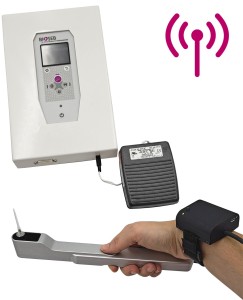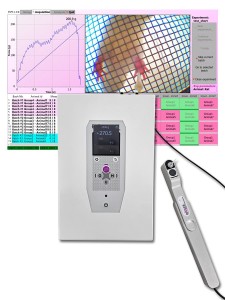Authors
Jennifer R. Deuis, Katharina Zimmermann, Andrej A. Romanovsky, et al.
Lab
University of Queenland, Australia
Journal
PAIN Volume 154, Issue 9
Abstract
Cold allodynia, pain in response to cooling, occurs during or within hours of oxaliplatin infusion and is thought to arise from a direct effect of oxaliplatin on peripheral sensory neurons. To characterize the pathophysiological mechanisms underlying acute oxaliplatin-induced cold allodynia, we established a new intraplantar oxaliplatin mouse model that rapidly developed long-lasting cold allodynia mediated entirely through tetrodotoxin-sensitive Nav pathways. Using selective inhibitors and knockout animals, we found that Nav1.6 was the key isoform involved, while thermosensitive transient receptor potential channels were not involved. Consistent with a crucial role for delayed-rectifier potassium channels in excitability in response to cold, intraplantar administration of the K+-channel blocker 4-aminopyridine mimicked oxaliplatin-induced cold allodynia and was also inhibited by Nav1.6 blockers. Intraplantar injection of the Nav1.6 activator Cn2 elicited spontaneous pain, mechanical allodynia, and enhanced 4-aminopyridine-induced cold allodynia. These findings provide behavioural evidence for a crucial role of Nav1.6 in multiple peripheral pain pathways including cold allodynia.
BIOSEB Instruments Used
Electronic Von Frey 4 (BIO-EVF4),Electronic Von Frey 5 with embedded camera (BIO-EVF5)
Source :
http://www.painjournalonline.com/article/S0304-3959(13)00271-6/abstract

 Pain - Thermal Allodynia / Hyperalgesia
Pain - Thermal Allodynia / Hyperalgesia Pain - Spontaneous Pain - Postural Deficit
Pain - Spontaneous Pain - Postural Deficit Pain - Mechanical Allodynia / Hyperalgesia
Pain - Mechanical Allodynia / Hyperalgesia Learning/Memory - Attention - Addiction
Learning/Memory - Attention - Addiction Physiology & Respiratory Research
Physiology & Respiratory Research











![Dynamic Weight Bearing 2.0 – Postural Module [Add-on]](https://bioseb.com/733-home_default/dynamic-weight-bearing-20-add-on-postural-module.jpg)
























 Pain
Pain Central Nervous System (CNS)
Central Nervous System (CNS) Neurodegeneration
Neurodegeneration Sensory system
Sensory system Motor control
Motor control Mood Disorders
Mood Disorders Other disorders
Other disorders Muscular system
Muscular system Joints
Joints Metabolism
Metabolism Cross-disciplinary subjects
Cross-disciplinary subjects CONFERENCES & MEETINGS
CONFERENCES & MEETINGS 
